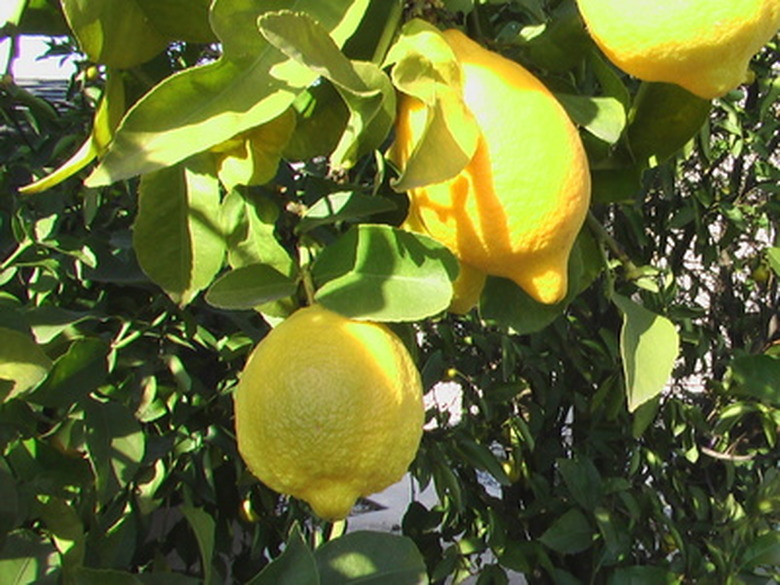The Best Kinds Of Lemon Trees
Lemon trees fall into two basic categories: true lemons and lemon hybrids. True lemons are known as Citrus limon or Citrus x limon and include the two most popular types of lemons, Eureka and Lisbon. Lemon hybrids are lemons that have been crossed with another citrus such as an orange or lime. Lemons are typically grown outside in USDA Zones 8 to 11 and inside as a container plant in colder areas.
Lisbon and Eureka
According to Sunkist.com, Lisbon and Eureka are so similar that "even the experts can't always tell them apart." Both produce medium-sized, yellow fruit. The pulp of both lemons is greenish-yellow, fine grained, tender, with 10 segments and is very acidic. They bear fruit all year, but are more prolific in the winter, spring and summer.
- Lemon trees fall into two basic categories: true lemons and lemon hybrids.
- True lemons are known as Citrus limon or Citrus x limon and include the two most popular types of lemons, Eureka and Lisbon.
However, there are some differences. Eureka lemons have a more textured skin, shorter neck and seeds. Eureka trees have an open branch structure with few thorns and are frost sensitive. Lisbon lemons are rounder, have a smoother skin and more pronounced nipple, and are often seedless. Lisbon trees are thorny and resistant to cold, heat and wind. They also tend to produce fruit clusters inside leaf canopies, which protect from the cold, while Eureka lemons grow in clusters that are unprotected.
Bearss
Bearss is considered similar to Lisbon lemons and is also a true lemon. It is fast-growing and very productive, more so than both Eureka and Lisbon. Its blooms are fragrant and will produce fruit in the summer and fall. Fruit tends to be acidic, flavorful and very juicy, with about six seeds. It is the leading variety in Florida. Bearss trees are thorny, sensitive to the cold, and prone to scab, greasy spot and oil spotting.
- However, there are some differences.
- Bearss trees are thorny, sensitive to the cold, and prone to scab, greasy spot and oil spotting.
Villafranca
Another true lemon, Villafranca is similar to Eureka. Villafranca trees are large, thorny and have thick foliage. It was the leading cultivar in Florida before it was replaced by Bearss. It has two major strains; one is everbearing while the other fruits more heavily in the summer.
Meyer
Meyer lemons are a hybrid cross between a lemon and either a mandarin orange or a regular orange. In fact, it resembles an orange in its shape and color. It has a thinner skin and is less acidic and sweeter tasting then true lemons. It is also more cold tolerant than true lemons. Meyer lemon trees are wide-spreading, small and relatively free of thorns. It is considered everbearing, but fruits more heavily in the winter and spring. It is subject to greasy spot and oil spotting.
- Another true lemon, Villafranca is similar to Eureka.
- In fact, it resembles an orange in its shape and color.
Ponderosa
Ponderosa lemon trees are small and thorny with large leaves and thick foliage. Its fruit are very large, pear-shaped, seedy and have a thick, rough, yellow-colored peel. It is everbearing and more sensitive to the cold then true lemons. It is a popular choice to grow indoors or as an ornamental plant. Ponderosa lemons appear to be a cross between a lemon and a citron.
Rough
Rough lemons are similar to true lemons, but are larger and have a bumpier skin and more seeds. It is often used as a rootstock for other citrus. Rough lemon trees are large with plenty of thorns. New growth tends to be tinged with red while the flowers and buds are reddish-purple. Fruit are medium-sized with a sunken nipple. Pulp is lemon-yellow, moderately juicy with a medium acid level and lemon odor.
- Ponderosa lemon trees are small and thorny with large leaves and thick foliage.
- Rough lemons are similar to true lemons, but are larger and have a bumpier skin and more seeds.
